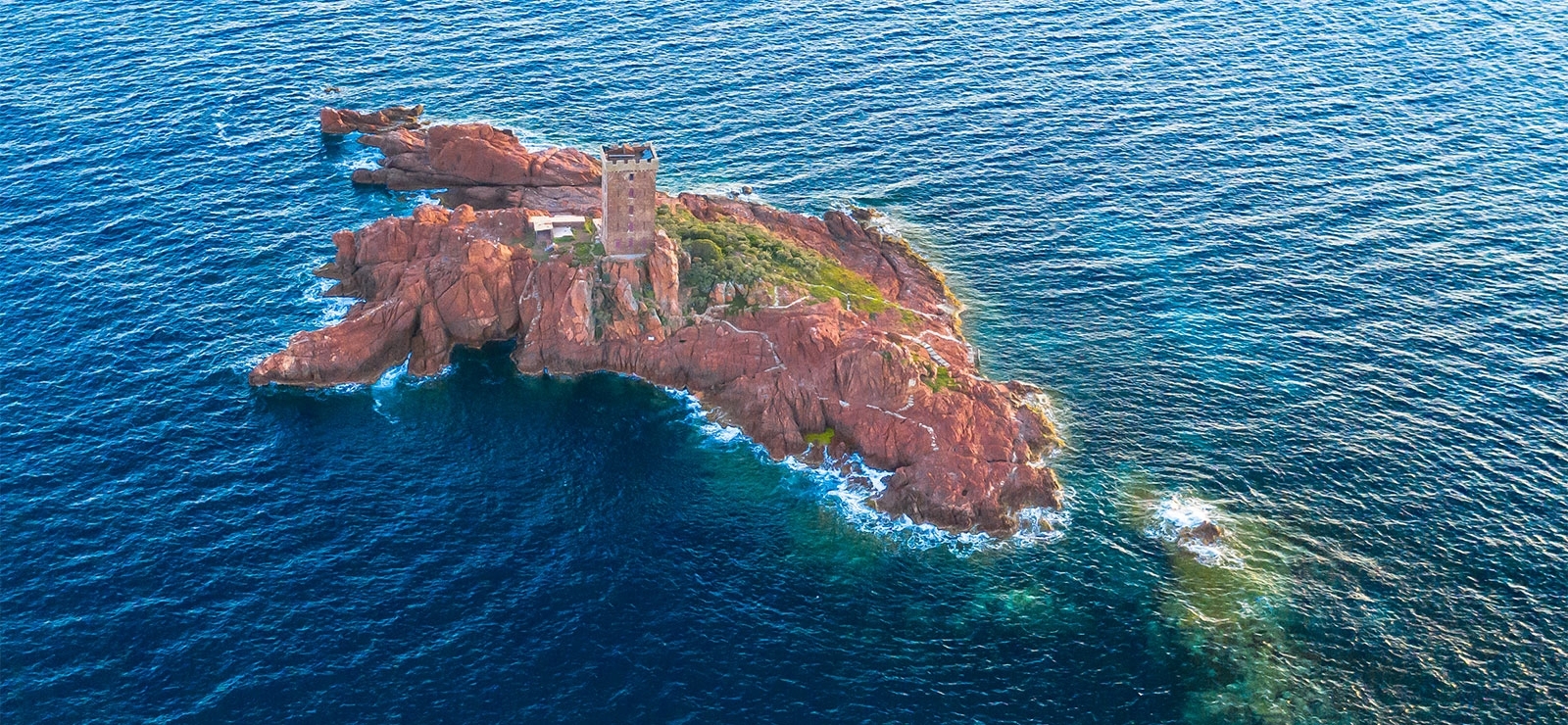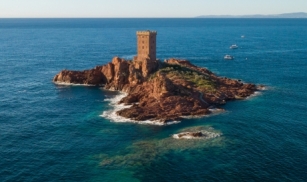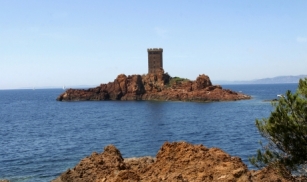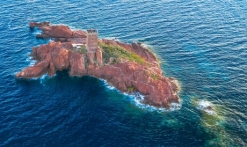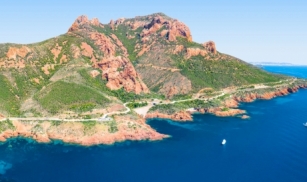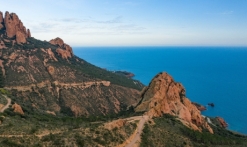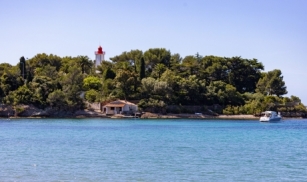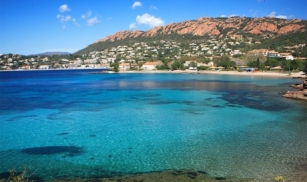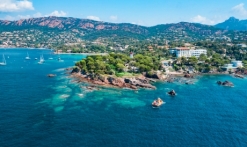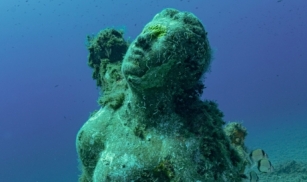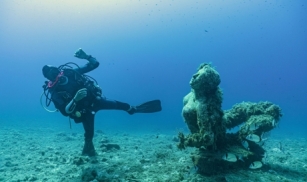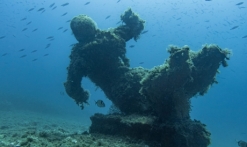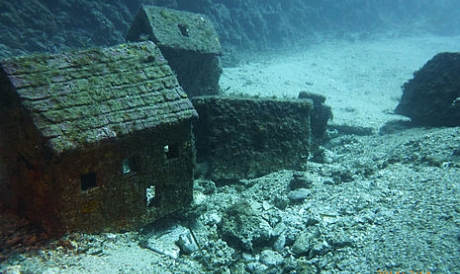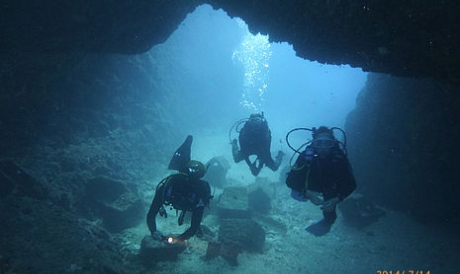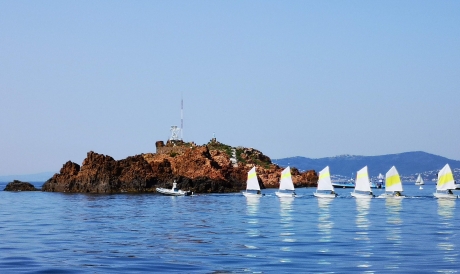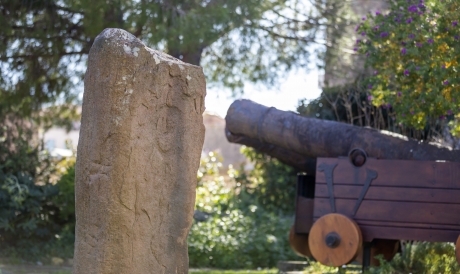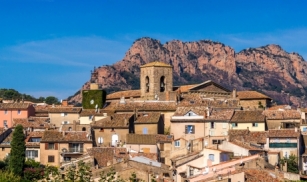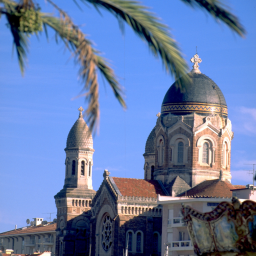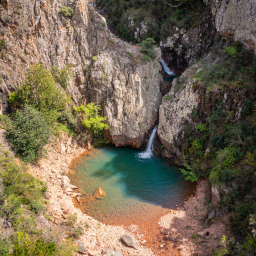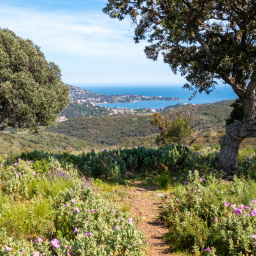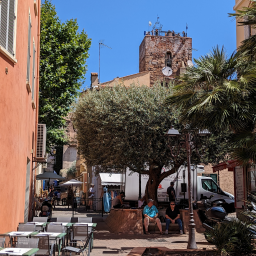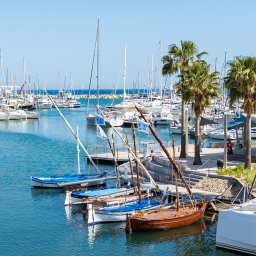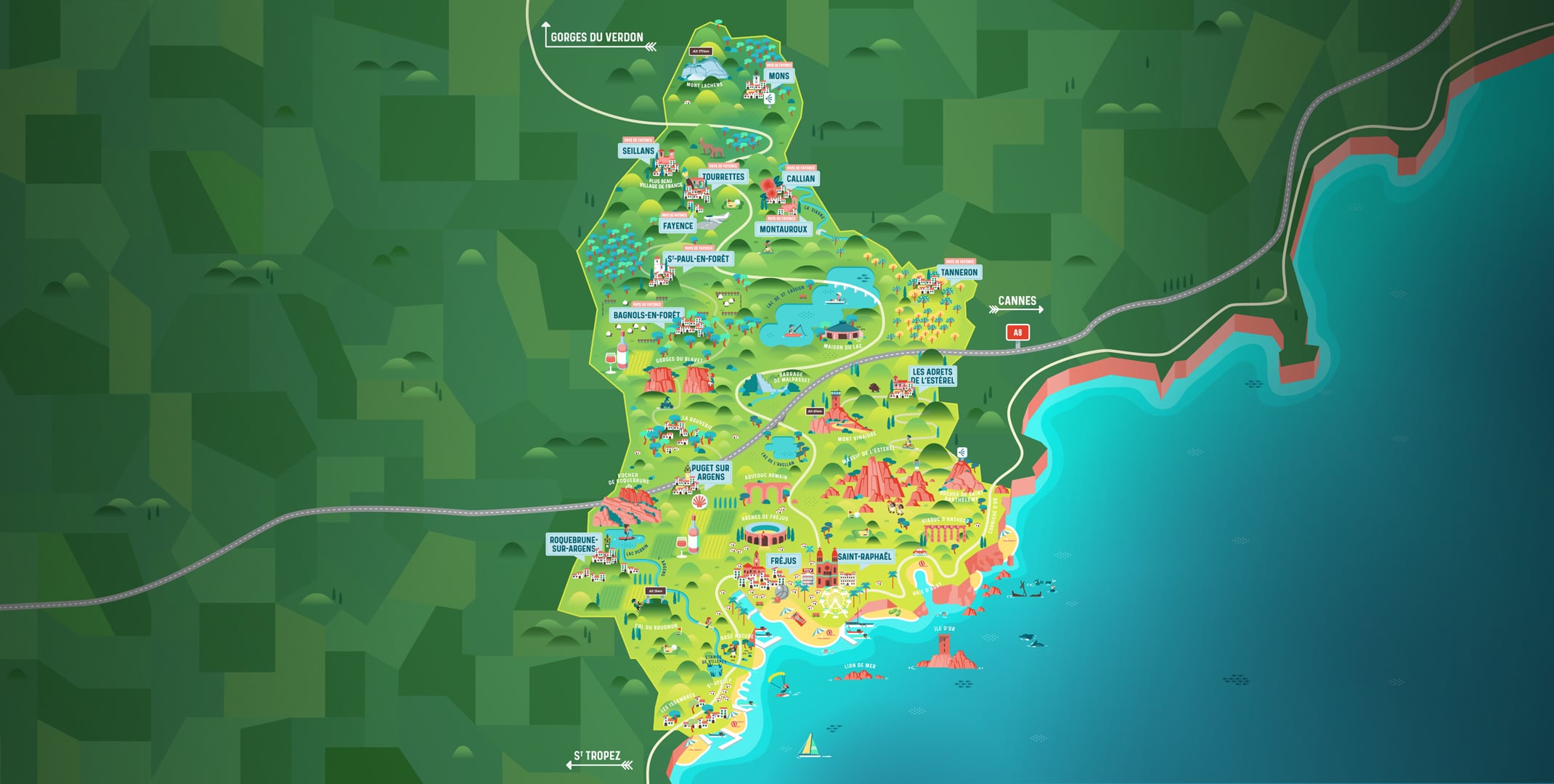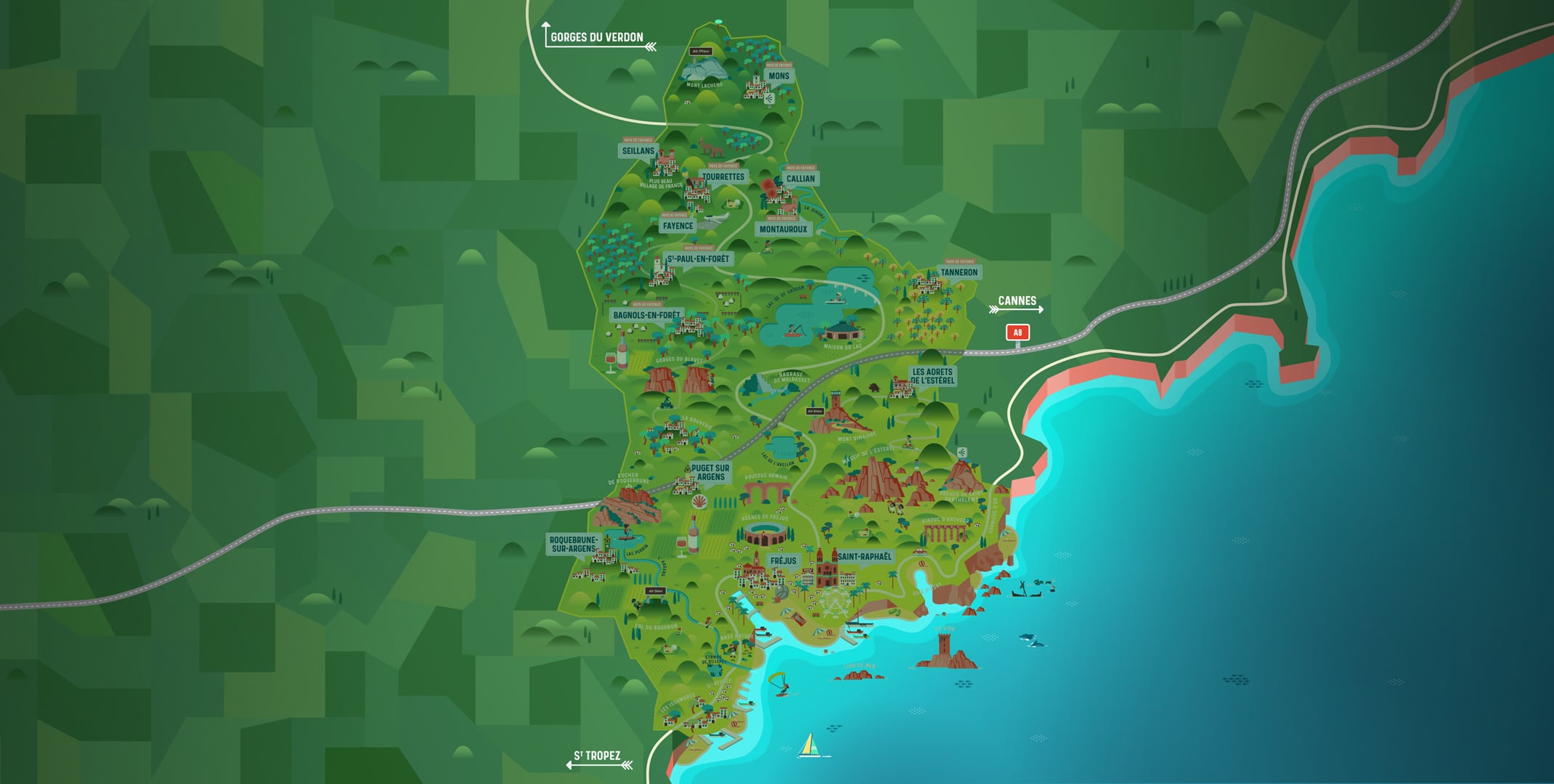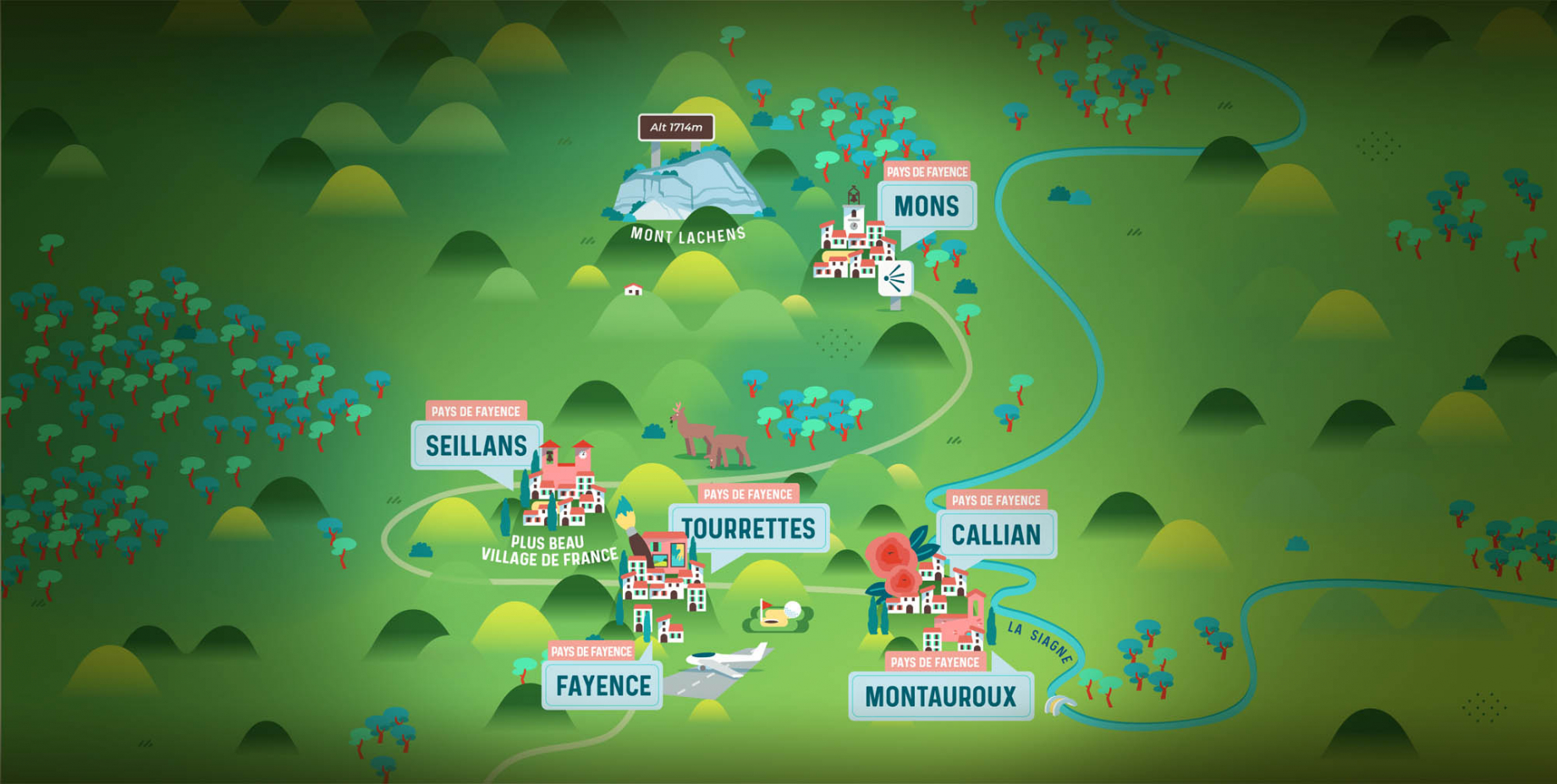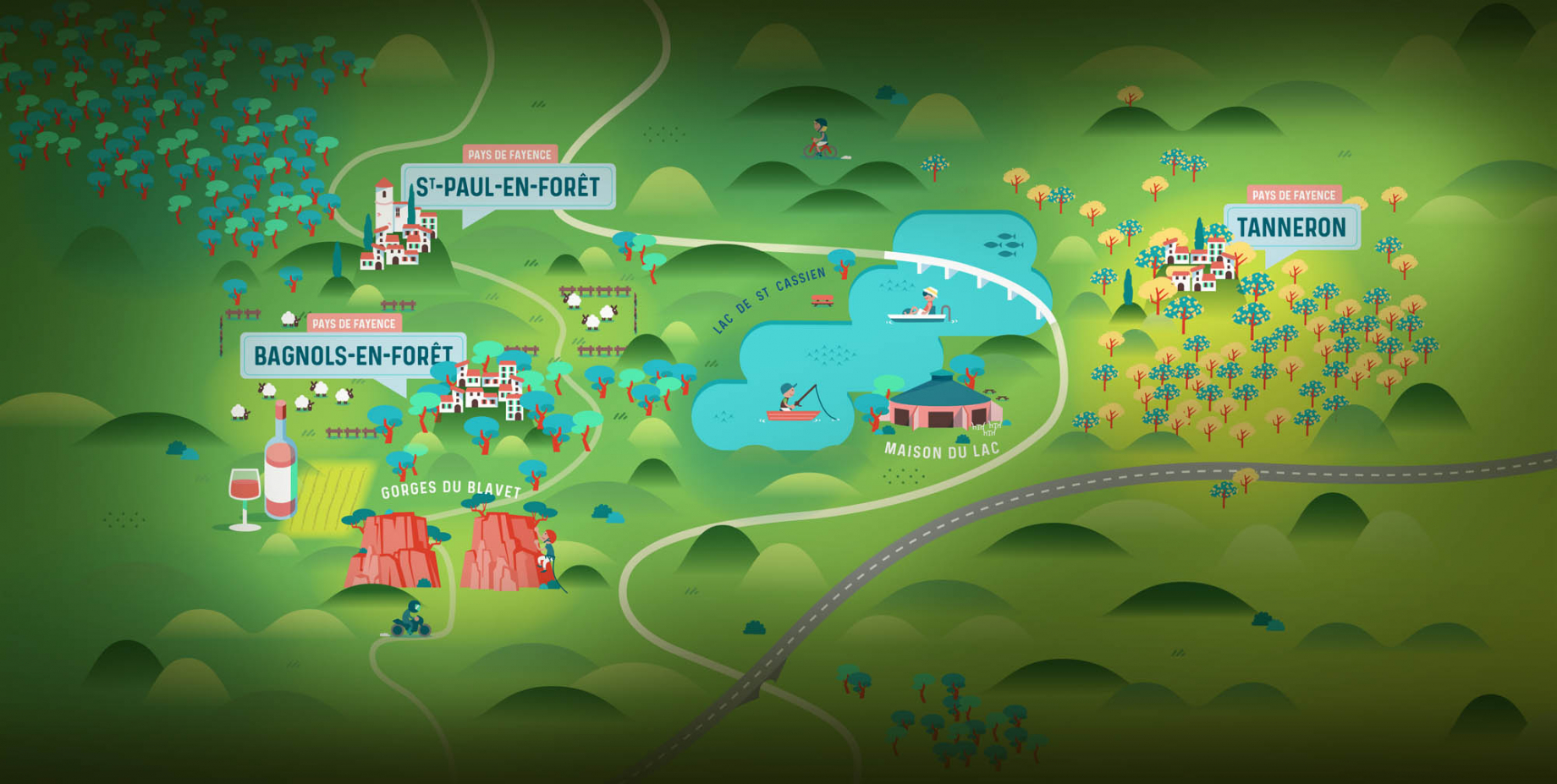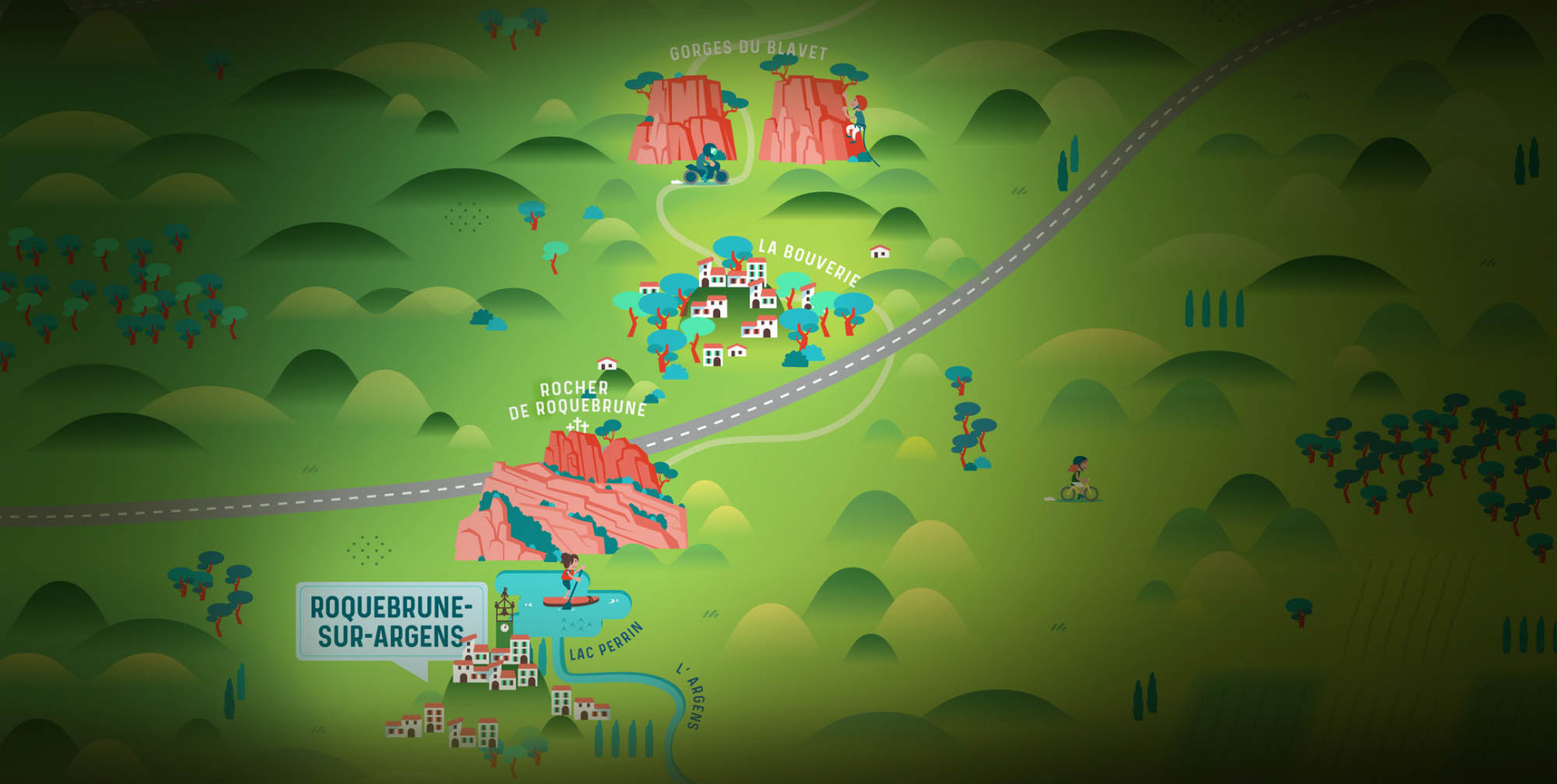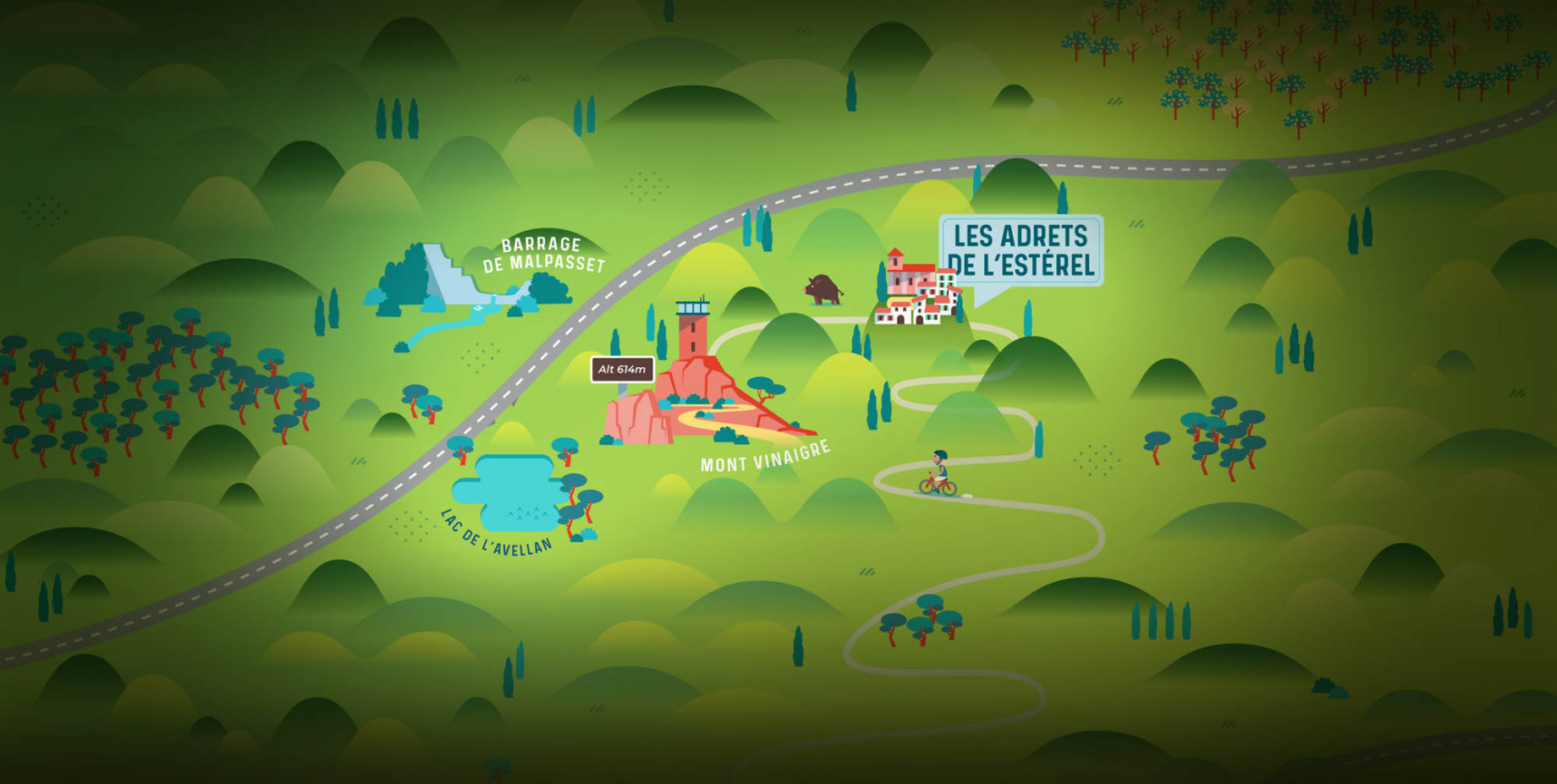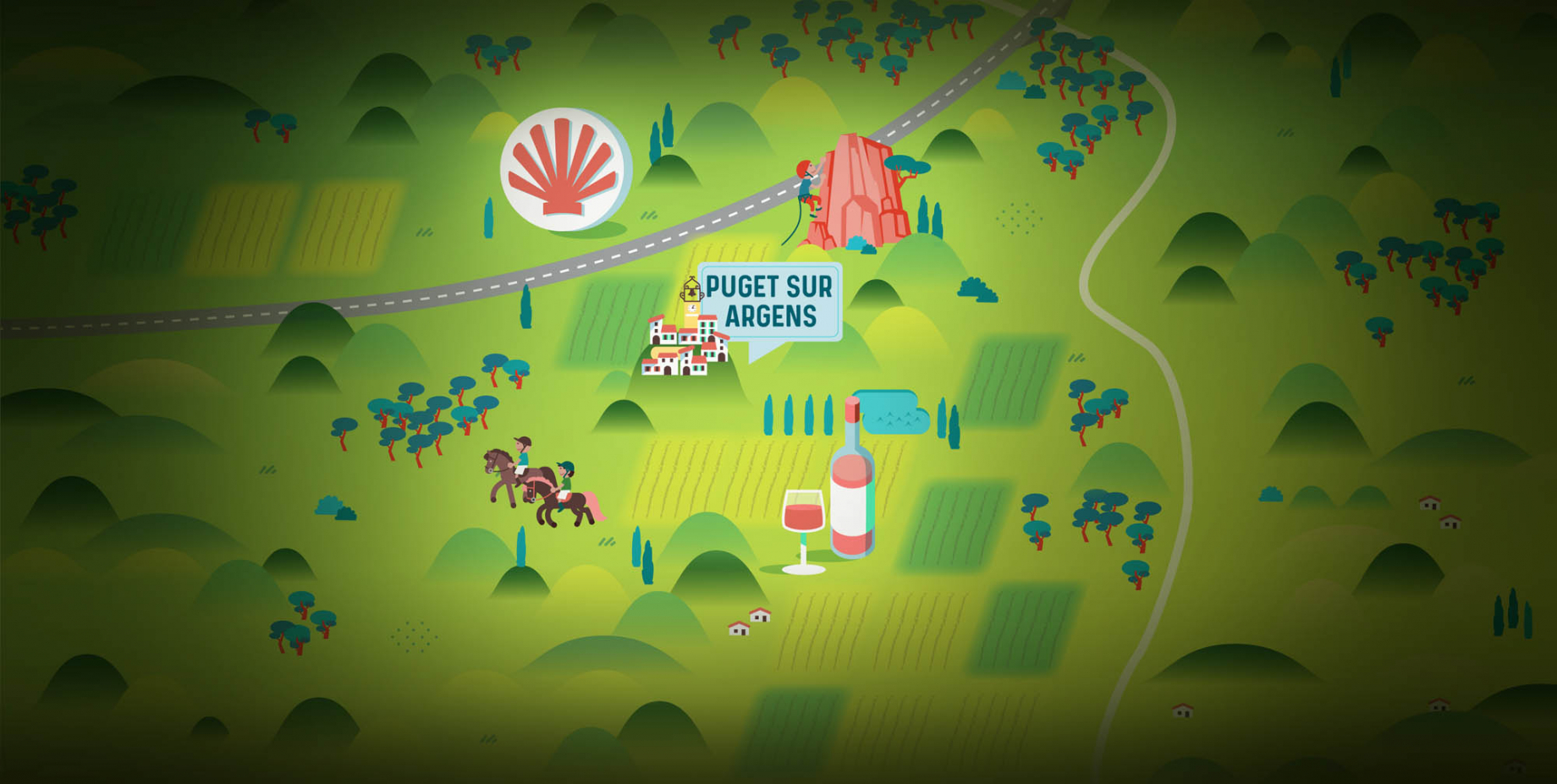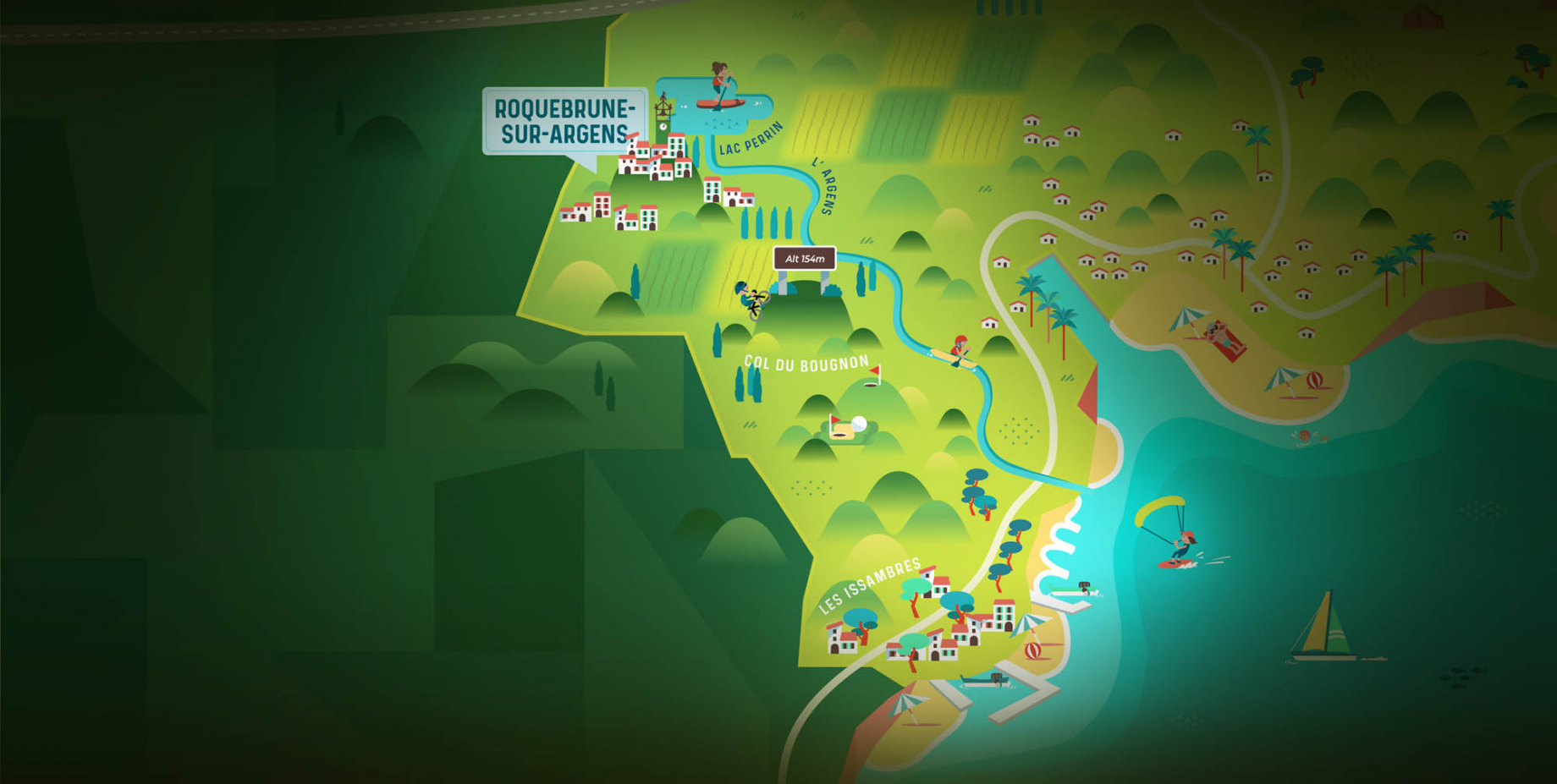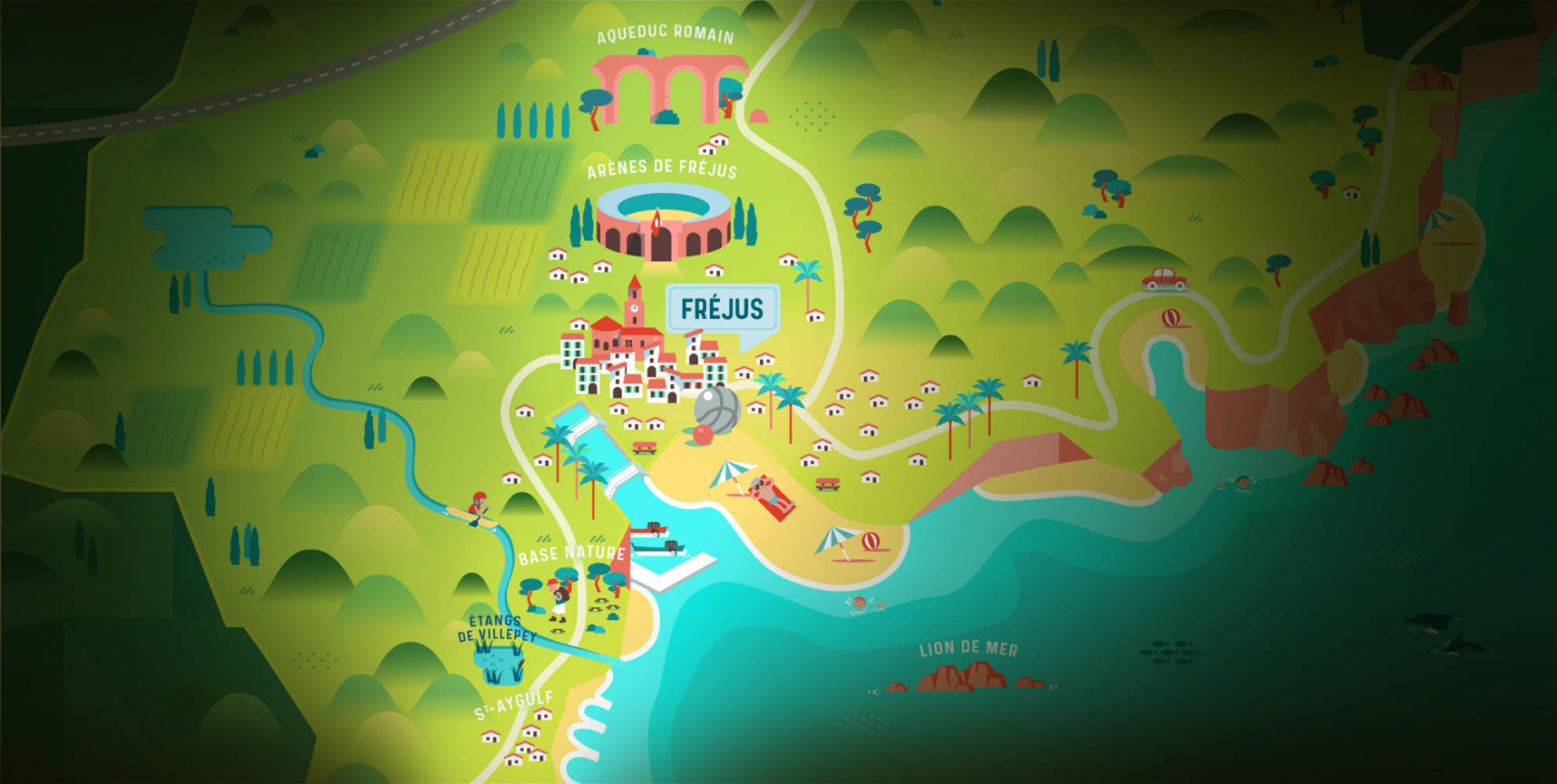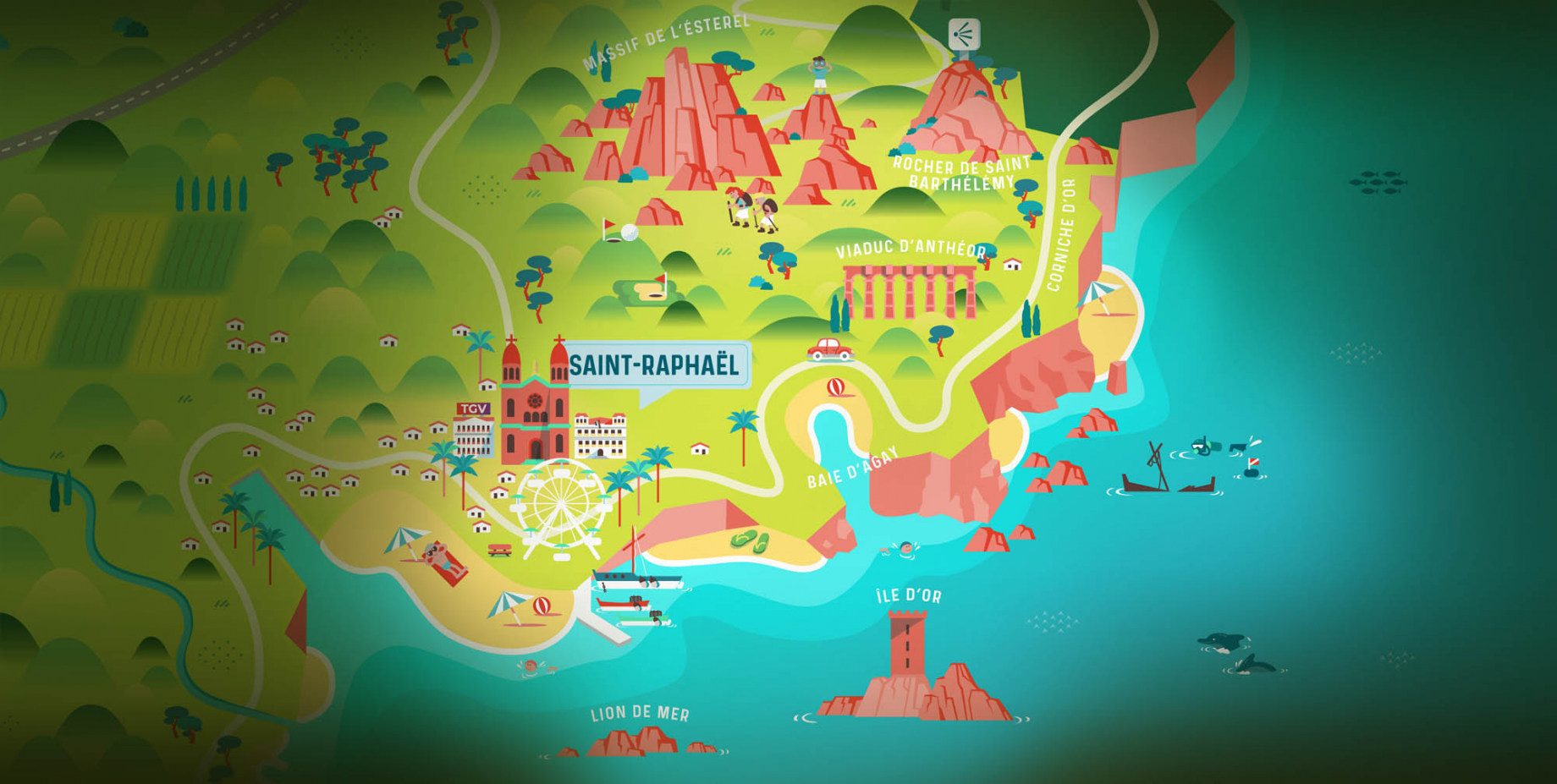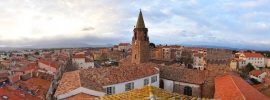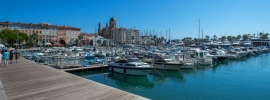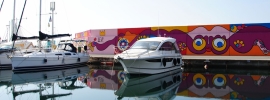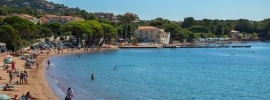The Isle of Gold in its kingdom
Facing the Dramont beach in Saint-Raphaël, this small rocky island of one hectare has all the makings of a large one.
It was put up for sale by the state in 1897. A local architect, Léon Sergent, bought it for the modest sum of 280 francs before, according to legend, he lost it at cards in 1909 during a drunken evening and sold it to the doctor Auguste Lutaud. Well... It seems more likely that the sale was made in due form.
It was this eccentric doctor who began the incredible story of the Ile d'Or.
He decided to erect an 18-metre-high Saracen tower on the island. When it was completed in 1912, he declared himself King Augustus I, King of the Golden Island. Numerous social festivities followed with the celebrities who had come to holiday on the Côte d'Azur.
During the Provence landings in 1944, a shell destroyed part of the island, which was uninhabited at the time.
In 1961, a new buyer, François Bureau, a former naval officer, set about renovating the tower until his death in 1994. He made the Île d'Or his second home. The Bureau family, who still own the island, hoist a flag at the top of the tower when they are present.
Legend has it that the Île d'Or inspired Hergé to create the album "The Black Island" in The Adventures of Tintin. While the resemblance is striking, particularly when the island is approached from the sea, there is no evidence to date to support this story.
The Estérelle Fairy
You know the Esterel massif. But have you ever heard of the Esterelle fairy?
It is said that a fairy lived in a palace in the caves of l'Estérel. She was consulted by pregnant women who asked for her protection to ensure that their pregnancies went smoothly. People also came to make offerings to her to obtain fertility or to thank her for having given birth. There are two versions of the origin of the name Esterelle: "Estello", which means star in Provençal, or "Esterlo", which evokes infertility. A reference to this legend can be found in Alphonse Daudet's tale "Les étoiles" in Les Lettres de mon moulin.
Saint Ex and the Agay lighthouse
At the pointe de la Baumette, the small white lighthouse with its red lantern watches over the entrance to the Agay roadstead.
Built in 1883, it stands just over 16 metres high. Located on private property, you won't be able to see the stele in memory of Antoine de Saint-Exupéry affixed to its tower. The author of The Little Prince said that "Agay is a paradise where even the dust is fragrant". Saint Ex discovered Agay through his sister Gabrielle, who was married to Pierre d'Agay. In 1931, his own marriage to Consuelo was celebrated in the Agay chapel and the meal was organised at the Hôtel des Roches Rouges. Legend has it that on 31 July 1944, the aviator flew over the lighthouse and his sister's home in his fighter plane before disappearing into the sea off Marseille.
The Virgin of the Sea Lion
Now at a depth of 12 metres, the statue of the Virgin of the Sea Lion originally stood at the top of a fountain near the coast in Saint-Raphaël, not far from the casino.
This fountain, inaugurated in 1894, celebrated the arrival of running water in the town. A few years later, the fountain was replaced by a bronze bust of the then mayor, Félix Martin. The statue of the Virgin then gathered dust for a few years in the town's technical offices, before being submerged in the sea on the initiative of diving instructor René Giraudon in the 1960s. Today, it still rests underwater, not far from a natural arch, to the delight of divers and snorkellers who come to admire it.
An unusual village
In front of Cap Dramont, there's an underwater village.
We're not talking about a real village in the open sea, but the remains of an animated film from the 1960s that never saw the light of day. This village of Lilliputians, with church, bell tower and small houses, inhabited only by corals and fish, lies at a depth of 24 metres. Level II divers will appreciate this unusual spot.
The Lion de terre and the Lion de mer
Local tourist attractions, the Lion de Terre and the Lion de Mer are two rocky islands visible from Saint-Raphaël. Legend has it that a princess of unparalleled beauty was enchanted to sleep by her jealous mother-in-law. Her drifting boat, blown by the winds, ended up on the Var coast of Saint-Raphaël, where a prince strolling along immediately fell in love with the beauty. He took a boat to meet her. However, Amphitrite, one of the 49 Nereids - women with fish tails, daughters of Nereus and Doris - and wife of Poseidon, was furious because she was in love with the Prince, and set off in pursuit of the couple, two sea monsters with the head of a lion and the body of a crocodile, with the aim of drowning the boat. Fortunately, Poseidon, God of the seas and oceans, took pity on the two humans and turned the monsters into stone, saving them.
The menhirs of Saint-Raphaël :
The commune of Saint-Raphaël is home to 4 menhirs, testimony to the presence of man on the Mediterranean coast of the Esterel 3 millennia before our era.
There are at least 3 dolmens on our territory: unlike the menhirs, these are funerary monuments. The most famous is the Valescure dolmen, near which fragments of human bones have been found, evidence of a mortuary rite during which bodies were cremated. During excavations, fragments of flint, remains of arrows and fragments of pottery were found, attesting to the existence of funerary offerings.
The Rocher de Roquebrune:
The Rocher de Roquebrune, standing on the outskirts of the village of Roquebrune-sur-Argens, is the subject of two ancestral legends.
THE LEGEND OF THE THREE CROSSES :
The Rock of the Three Crosses, from its real name, was so called because of a legend according to which when Christ expired, three rifts.
They tore through the solid rock, symbolising the 3 wounds of Christ or the 3 crosses erected on Calvary on the day of the crucifixion.
Three crosses were erected by the locals on top of the rock, which became a place of pilgrimage.
Unfortunately, these crosses did not stand the test of time and eventually disappeared.
The three steel crosses that have stood there since 1991 were fashioned by contemporary artist Bernar Venet, who was commissioned to erect three new crosses in place of those that had disappeared.
THE LEGEND OF SAINT-TROU :
The second legend tells of the arrival in these parts of a young penitent named Marie, who was remarkably beautiful and had taken a vow of chastity and piety.
However, Robert, a local nobleman who was hunting in the area, was attracted by her beauty and decided to court her. Faced with his insistent advances, the young woman fled, the man hot on her heels. When she came to a rock face with no way out, she begged the Blessed Virgin for help.
The rock cracked wide enough to let the young woman through, but not her pursuer.
Nowadays, it is said that only virtuous souls can cross the Saint-Trou. The rest of us are condemned to walk around it as a penance.

